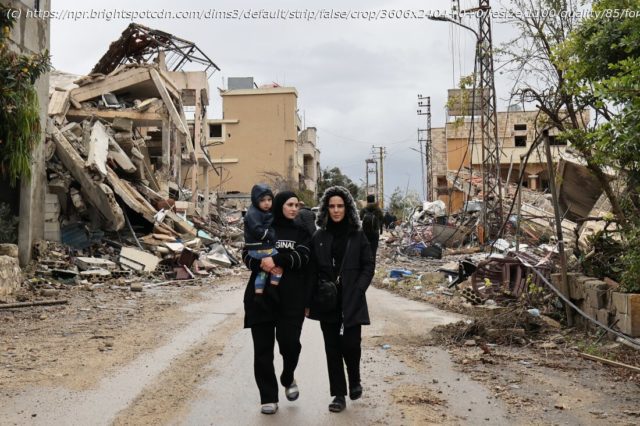Celebratory gunfire rang out in Beirut to mark the start of a ceasefire between Israel and the Iran-backed militant group Hezbollah to end almost 14 months of fighting.
TEL AVIV, Israel, and BEIRUT — Celebratory gunfire rang out in the Lebanese capital Beirut overnight Tuesday to mark the start of a ceasefire between Israel and the Iran-backed militant group Hezbollah in Lebanon to end almost 14 months of fighting.
The truce, brokered by the United States and France, went into effect at 4 a.m. local time on Wednesday. Fighting, however, continued up to the zero hour, with Israeli airstrikes in Lebanon far into the night.
Underlining the potential fragility of the truce, the Israeli military says it fired toward suspects in a prohibited zone just hours into the ceasefire, and the suspects left. Israel’s defense minister, Israel Katz, said they were Hezbollah operatives in a border village.
In a joint statement, President Biden and French President Emmanuel Macron said the deal «will cease the fighting in Lebanon, and secure Israel from the threat of Hezbollah and other terrorist organizations operating from Lebanon.» They said it «will create the conditions to restore lasting calm and allow residents in both countries to return safely to their homes» along the border.
Hezbollah started firing rockets into northern Israel in support of Hamas after the Palestinian militant group led an attack on Israel on Oct. 7, 2023. Israel and Hezbollah have exchanged fire since then. The fighting — which intensified eight weeks ago, when Israel initiated a ground invasion of southern Lebanon aimed at eliminating Hezbollah fighters and weapons capabilities from the border region — has killed more than 3,700 people in Lebanon, according to Lebanese health officials, and around 80 people in northern Israel, according to Israeli officials.
The conflict has driven more than 1.2 million Lebanese — about a fifth of the population — from their homes, according to the United Nations. Israel estimates about 60,000 people evacuated northern communities to flee Hezbollah’s rockets.
Israel also stepped up airstrikes across Lebanon in recent months, which damaged homes and infrastructure, and killing the group’s top officials — including longtime chief Hassan Nasrallah, its senior commander in the south, Mohammed Nasser, and rocket and missile commander Ibrahim Qubaisi.
Israel has fulfilled its military objectives, primarily eliminating Hezbollah infrastructure, says Randa Slim, director of the Conflict Resolution and Track II Dialogues Program at the Middle East Institute. «On the border, it’s pretty much destroyed», Slim says. «But on top of that, they have wiped out their military command council, as well as their political leadership, top senior political leadership. So these are severe blows to Hezbollah, which is going to take a long, long time to recover from.»
Many Lebanese already began trying to return to their southern villages, despite Israeli military warnings not to do so yet, while Israeli troops are still deployed.
In southern Lebanon, Patricia Taleb, 24, was driving Wednesday to reach the home she was forced to abandon earlier. «We know that this is the end days of the war.






